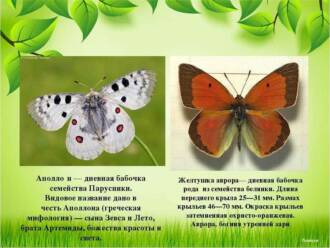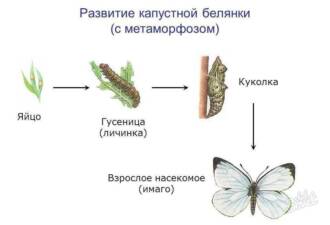
The history of butterflies goes back to ancient times. These delicate and colorful insects have attracted people's attention since ancient civilizations. Many cultures and peoples in different parts of the world attached special meaning and symbolism to butterflies.
According to the legends and mythology of various peoples, butterflies were associated with the spiritual world and reincarnation. Their transformation from a caterpillar into a beautiful insect was considered a symbol of rebirth and overcoming difficulties. In some cultures, the butterfly was considered the messenger of the gods and the bearer of prosperity.
The scientific study of butterflies began in the 18th century. Scientists from various countries became interested in these winged creatures and began to study their life cycle, behavior and diversity of species. Thanks to these studies, it became possible to classify and describe thousands of species of butterflies.
Modern research shows that butterflies are one of the most diverse and adaptive insect species on the planet. They live on almost all continents, with the exception of Antarctica. Butterflies play an important role in the ecosystem, being plant pollinators and food for many animals.
Ancient ideas about butterflies

The history of butterflies goes back thousands of years, and ancient civilizations had their own ideas about them. In different cultures, butterflies symbolized different things, and their images were often mentioned in mythology and religious beliefs.
In ancient Egypt butterflies were associated with the worship of the Goddess Isis, the goddess of motherhood and fertility. Butterflies were also considered a symbol of eternal life, resurrection and rebirth.
In ancient Greece butterflies were associated with the souls of the dead. They believed that they are carriers of souls from the world of the living to the world of the dead. Butterflies also symbolized the beauty and ephemerality of life.
In China Butterflies were a symbol of love and joy. They were associated with marriage and family happiness. It was believed that seeing a butterfly on a wedding day was a good sign, promising a happy life in marriage.
In Indian mythology butterflies were considered the embodiment of the souls of dead enemies. They symbolized change, transformation and freedom. Butterflies were especially important in military culture, where their images were used on military shields and clothing.
In every culture, the history of butterflies has its own characteristics and symbolic meaning. Butterflies are amazing creatures that continue to inspire and fascinate people around the world.
The role of butterflies in mythology and religion

The history of butterflies is deeply rooted in the mythology and religion of different cultures. Butterflies have been associated with different deities and symbols in different parts of the world.
In ancient Greek mythology, the butterfly was associated with the goddess of the soul, Psyche. She was depicted as a beautiful woman with butterfly wings, symbolizing change and transformation.
In Chinese culture, the butterfly has been a symbol of love and joy. She was often depicted in Chinese paintings and art, and was also used in wedding ceremonies.
In Indian mythology, the butterfly was a symbol of spiritual transformation and healing. The Indians believed that a butterfly could transfer the soul of a dead person to the spirit world.
In the Christian religion, the butterfly is associated with a symbol of resurrection and rebirth. The butterfly flying out of the cocoon symbolizes the resurrection of Christ and the hope for life after death.
The history of butterflies in mythology and religion demonstrates their significance and symbolic power. They are not only a beautiful natural phenomenon, but also a source of inspiration for different cultures and beliefs.
Scientific discoveries and classification of butterflies

The history of the butterfly is the history of scientific discovery and classification. Already in antiquity, people began to study and describe the variety of butterflies. However, the real boom in the study of these colorful insects occurred in the 19th century.
The systematics and classification of butterflies were based on the analysis of their morphological features. Scientists have identified several families, including various types of butterflies. For example, the family Nymphalidae, represented by such species as the admiral, peacock and cabbage. The families Papilionidae (family of sailboats) and Pieridae (family of white butterflies) have also been identified.
However, with the development of science and technology, research on butterflies has become deeper and more detailed. Modern methods of analysis allow scientists to study the genetic material of butterflies, to study their behavior and ecology. This allows us to refine the classification and expand our knowledge of the diversity of these insects.
There are over 180,000 described species in the modern classification of butterflies. They are divided into several families, genera and species. Each type has its own unique features and characteristics. Some butterflies are brightly colored, while others camouflage themselves as leaves or flowers. Some species draw attention with their wings, which are adorned with intricate designs and patterns.
Thus, the history of the butterfly is a history of scientific discovery and classification that continues with modern research. Each new discovery expands our understanding of the diversity of these beautiful insects and their role in the ecosystem.
First scientific research
The history of butterflies has attracted the attention of scientists since ancient times. One of the first researchers was the ancient Greek scientist Aristotle, who described and classified various species of butterflies in his work "History of Animals." His observations and conclusions became the basis for further research in the field of entomology.
During the Middle Ages, butterfly research was relatively limited, but some scientists continued to be interested in the topic. In the 16th century, German scientist Conrad Gesner published his work "History of Animals", in which he described many species of butterflies and proposed the first classification system.
In the 19th century, butterfly research became more systematic and scientific. One of the greatest scientists in this field was Charles Lucien Bonaparte, who did extensive research and developed a classification system that is still in use today.
With the development of technology and scientific research methods, modern scientists continue to study butterflies. They use genetic methods, molecular analyzes and other modern approaches to understand the evolution and diversity of these amazing creatures.
Major groups of butterflies

The history of the butterfly has many different species and varieties. All butterflies are divided into several main groups depending on their appearance and behavior.
daytime butterflies

Diurnal butterflies are the most famous group of butterflies. They are distinguished by their brightly colored wings and active daytime life. Diurnal butterflies prefer bright places and feed on flower nectar. They play an important role in pollinating plants and are among the most beautiful creatures of nature.
Night butterflies
Moths are a group of butterflies that are active at night. They have more subdued wing coloring, often gray or brown, which helps them hide from predators. Moths are usually attracted to light sources, such as lanterns or windows, and can be seen flying around at night.
pasta butterflies

Macaroni butterflies are a group of butterflies characterized by long, narrow wings that resemble macaroni. They are usually inconspicuously colored, which helps them camouflage themselves among leaves and flowers. Macaroni butterflies live in tropical forests and are one of the most diverse species of butterflies.
migrating butterflies

Migratory butterflies are a group of butterflies that fly long distances in search of food and breeding grounds. They can fly long distances, crossing oceans and country borders. The most famous migratory butterflies are the monarchs, which fly from Canada to Mexico and back every year.
Evolution and development of butterflies

The history of butterflies is closely connected with the history of life on Earth. Butterflies are one of the most numerous and diverse groups of insects. They have come a long way of evolution since ancient times.
The first representatives of butterflies appeared on Earth about 200 million years ago. These ancient specimens were bulky and clumsy, but they already had the basic features of modern butterflies: two pairs of wings and a proboscis for feeding on flower nectar.
Over time, butterflies have undergone significant changes. They became lighter and more mobile, developed the ability to color and uniform masking. Some species of butterflies have acquired bright and colorful colors that serve as protective colors or signal poisonousness.
Modern butterflies are diverse in size, wing shape and color. They occupy various ecological niches and perform important functions in ecosystems. Butterflies play the role of pollinators of plants, and are also food for many animals.
Origin and diversity of species

The history of butterflies goes back to ancient times. They are one of the oldest and most diverse classes of insects. Butterflies belong to the order Lepidoptera, which includes more than 180 thousand species. They live on every continent except Antarctica and inhabit a wide variety of ecosystems, from rainforests to deserts and tundras.
The appearance of butterflies is diverse and fascinates with its beauty. They come in a variety of colors, patterns, and wing sizes. Some butterflies have bright and saturated colors that serve as a signal to partners or a warning of poisonousness. Other types of butterflies, on the contrary, have delicate and pastel shades.
The origin of butterflies is associated with evolutionary changes over millions of years. They have come a long way from primitive forms to complex and diverse types. Butterflies have gone through numerous stages of development, including changes in body structure, wings, mouthparts, and reproduction methods.
Butterflies play an important role in the ecosystem. They act as pollinators, carrying pollen between plants and promoting their reproduction. In addition, butterflies are food for many animals such as birds and bats. They also serve as an object of study for scientists who study their behavior, adaptation and evolution.
Factors affecting evolution

The history of butterflies testifies to the many factors that influence their evolution. One of the main factors is the environment. Butterflies are exposed to various conditions such as climate, food resources, and the presence of predators. Changing these factors can cause changes in the behavior, physiology and morphology of butterflies, which in turn can lead to evolutionary changes.
Another important factor influencing the evolution of butterflies is the interaction between species. Interactions with other organisms such as plants, predators, and competitors can put pressure on butterflies and drive evolutionary change. For example, some butterflies develop specialized adaptations that help them avoid predators or adapt to certain types of plants on which they feed.
Genetic mutations also play a role in the evolution of butterflies. Mutations in the genome can lead to changes in the phenotype, which can give certain individuals an advantage in competing for resources or interacting with the environment. Some mutations can be beneficial and promote the survival and reproduction of individuals, resulting in the transmission of these mutations to the next generations.
Thus, the history of butterflies is evidence of the influence of various factors on their evolution, such as the environment, interactions with other species, and genetic mutations. These factors contribute to changes in the behavior, physiology and morphology of butterflies, which allows them to adapt to changing conditions and survive in their environment.






